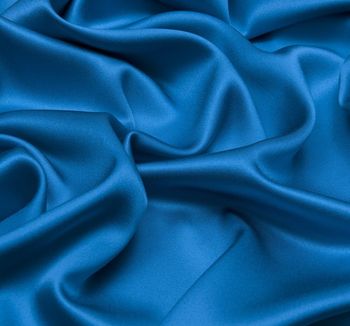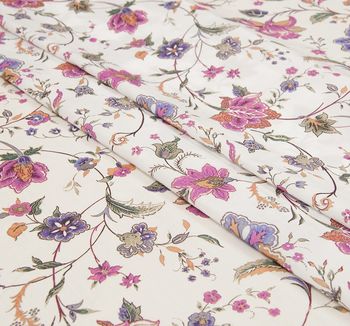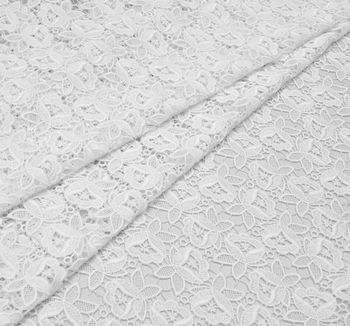Silk is a timelessly trendy natural fabric woven from the cocoons of silk worms. The world’s most famous fashion brands regularly apply it for various men’s and women’s outfits earning the admiration of the audience.
Coating Fabrics for Men and Women
Coating fabrics are designed to protect your body from cold, wind and rain during early spring, autumn and winter seasons. Coat fabrics come in a variety of weights and finishes, from lightweight materials for cooler weather to heavy cloths that are up to the challenge even on the most freezing day.
In this article we’re going to cover the most popular types of coat fabrics used for casual and special occasion coats and jackets. While one can definitely buy a ready-made piece, sometimes finding the perfect one seems almost impossible.
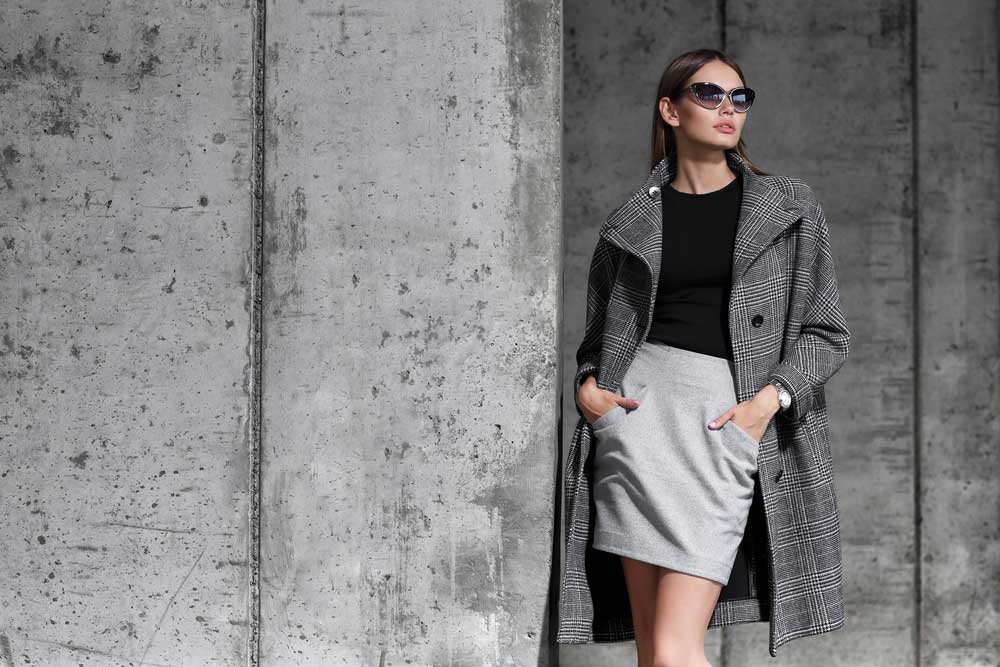
Why not save your precious time and sew a coat yourself? All you need to do is pick the right material and choose the style, and we are here to help you.
Types
For those of us who live in moderate climates and know what exactly winter is like, having a warm coat is as essential as having a nice pair of boots. Still, coats come in handy even if you’ve never seen snow in your life. Lightweight coats protect us from wind and keep us warm and snug on a late night. Plus, we all travel sometimes, and it’s better to be prepared when you’re going someplace windy like Stockholm or Copenhagen.
Basically, all coat materials can be divided into three groups, each one serving its own purpose.
|
Type |
Average Weight |
Purpose |
|---|---|---|
|
Lightweight |
200-300 g/m 2 |
Lightweight materials for cool spring/summer nights, special occasion wear |
|
Medium weight |
300-450 g/m 2 |
Midweight fabrics for moderate temperatures, for cool autumns and early springs |
|
Heavyweight |
450-700 g/m 2 |
Sturdy, super warm coats for colder months |
Lightweight materials include jacquard, tweed and boucle, thin wool fabrics, velvet, etc. Some of them can be made into stylish outerwear to be worn on top of an elegant dress or a mind-blowing two-piece suit.
Medium weight fabrics comprise denser wool materials and jacquards, cashmere, various wool blends. Properly lined or quilted, they make all kinds of coats, jackets and capes that are a pleasure to wear in the demi-season.
Heavy coat fabrics are created to keep you super warm and comfortable in snowy and otherwise severe winters. The most popular ones are 100% wool materials, wool blends, furs and padded puffer fabrics.
Now, let’s dive deeper into the types of fibers you should have your eyes open for when choosing a coat material.
.jpg)
What Are the Best Coat Materials?
Whether you buy an off-the-rack coat or sew one yourself, it’s crucial to know your way around various types of fabrics. The fiber you see on the label tells you straight away how warm this or that fabric is and how long it will last. There are many types of materials on the market, and most of them seem to be pretty good. So, what exactly should you keep in mind before investing into something that you’ll be wearing for at least several seasons? Which materials are the best ones for winter?
- Wool. Wool is natural and breathable. It is known for its insulating properties and softness. You might consider buying 100% wool or go for wool blends – both will keep your warm. The good thing about sheep’s wool is that it comes in all sorts of finishes: boiled wool, flannel, gabardine and felt are just some of the examples. Sheep’s wool is also water-resistant, which makes it perfect for snowy weather.
- Cashmere. Cashmere is more expensive that sheep’s wool, but it’s a real show-stopper. Fabulously soft and silky, it is probably one of the best picks for special occasion coats. Cashmere is more difficult to care for, but it’s worth the risk: anyone who once owned a cashmere fabric will agree right away.
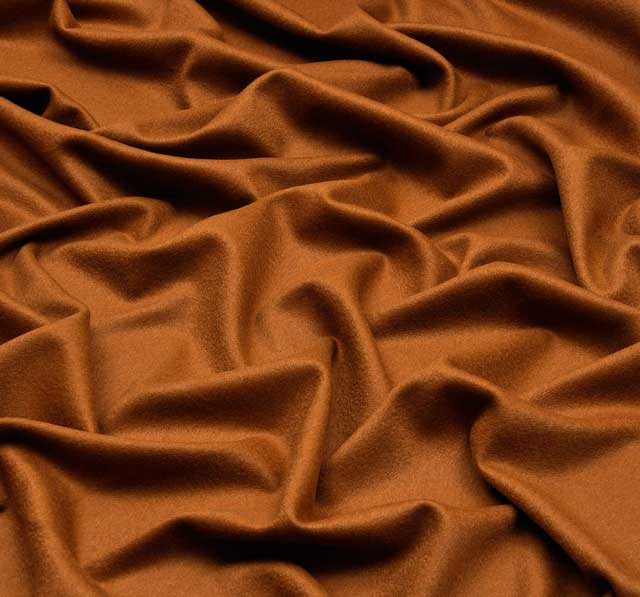
- Mohair. With its distinctive frizzy look, mohair is ideal for winter coats and jackets. Made from the fleece of the Angora goat, it is second to none in terms of natural fibre durability. It is warm and fuzzy, and it fits both men’s and women’s wardrobes. Either pure or blended with wool, mohair fabrics will keep you comfortably warm all season long.
- Tweed. Tweed fabrics are either wool or wool blends, the classic colorways being all about earthy tones. Tweeds are sturdy and durable, they are one of those timeless options that never go out of fashion. They are also highly versatile: lightweight tweeds woven with fancy yarn are perfect for those Chanelesque looks, while Harris tweed is the iconic fabric for gentlemen.
- Fur and Faux fur. One of the oldest materials used by people to stay warm in the winter, fur is definitely a ‘yes’ when it comes to coats. Mink, chinchilla, sable, fox, beaver fur – the list is endless. It is also available in an artificial form. You get the same gorgeous look and texture, but go completely animal-friendly. If you want to add some fur to your wardrobe, make sure you buy a high quality fabric, which is usually more expensive. Poor quality fur will not ward off the cold.
You might combine several types of fabrics to create your dream coat. Why not use cashmere together with merino wool, or add some fur to your cuffs? Any winter wardrobe is a playground, and there’s no reason to limit oneself to one fiber. However, if you decide to mix several fabrics, make sure they look good together.
Wool Fabrics
Since wool is one of the most popular choices for winter apparel, it demands a whole new chapter. Why is wool so special?
- It’s warm
- It’s natural
- It’s durable
- It’s easy to care for
- A wide variety of colors, patterns and finishes
When we say ‘wool’, we mean not only merino wool, but also a vast range of wool fabrics made with the fleece of various animals, such as alpaca, mohair, vicuña, or camel. Which one is best? It’s a matter of taste. In general, sheep’s wool is cheaper than alpaca or cashmere, while rare vicuña beats them all.
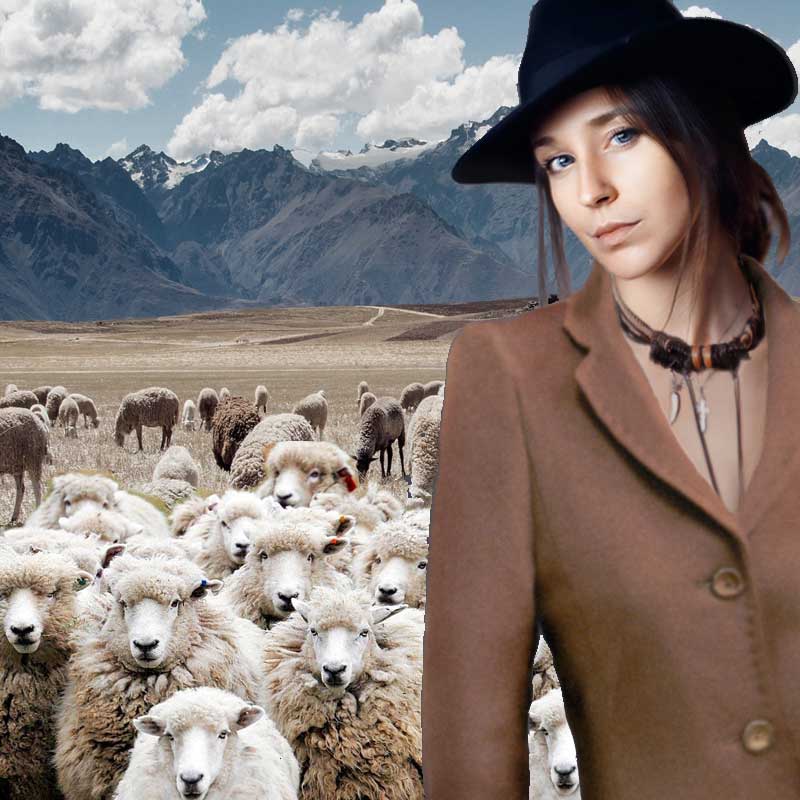
If you’re not quite familiar with these noble fibers, but eager to try, start with wool blend fabrics, e.g. 80% wool and 20% alpaca or camel. Based on wool, they are superb insulators plus benefit from the presence of other types of wool. Investigate the unknown world of precious yarn step by step, adding new fibers to your collection and forming preferences. And if you’ve already tried cashmere, alpaca and even vicuña, chances are you have your coat favourite!
What Are the Winter Coat Trends 2019?
Just like any other piece of clothing, a winter coat is the reflection of your style. While some of us prefer classics, others are passionate about fashion trends and do not want to miss a single one of them. This winter is full of nice surprises and ideas on what your next coat could look like. What’s hot on the runways?
- Colors. White is all over the catwalks. By all means, white coats are hard to take care of, but they are pure chic and style. We also see an abundance of silver, black, brown, and camel tones, as well as eye-pleasing turquoise and multicolored variations.
- Patterns. Herringbone and Prince of Wales checks are everybody’s favourite in winter 2019. Another trend worth mentioning is quilting – a beautiful choice for puff jackets and coats.
- Fabrics. Fur and faux fur are all the rage, especially short fur and shearling. Wool and mohair are as popular as ever. Looking for something ultratrendy? Some of the high fashion designers offer leather and even sheer vinyl coats!
- Silhouettes. The new season gives freedom of choice to all of us. Among the most popular shapes are the cape, the cocoon and the long thick coat in plain black, grey, green, camel and pink. We also see a lot of oversize coats: in solid colors, checks and also quilted.
Just as usual, the fashion world sets your imagination in motion and inspires the most daring looks.
Manufacturers
The most luxury coating fabrics are created by the range of prominent European manufacturers. Boucle and tweed boucle fabrics come from Clarenson, Grosber, Luigi Verga and Carnet. Jacquard — from Ruffo Coli, Carnet and Malhia Kent. Those who prefer Paisley or colourful prints can go for Etro, renowned for its timeless Paisley pattern. The fabrics by Loro Piana and Luigi Colombo are favoured by the aficionados of fine wool with a touch of cashmere. For a man’s coat, the fabric of first choice can be worsted wool by Holland & Sherry, Scabal, Dormeuil and Ermenegildo Zegna.
Each of those brands is present on the market for decades and is regularly selected by the leading fashion houses as official suppliers. Not surprisingly, impeccable reputation is a matter of utmost importance for the coating manufacturers, which obliges them to maintain the highest quality.
Tips for Making a Perfect Coat
Have you ever heard a saying – ‘a fine dress helps to impress’? Well, it is true, especially in summer when the first thing other people see when they meet you is your dress (skirt/pants/jackets, you name it). But in fall or in winter, the first impression is made with a coat, and that’s why it needs to be perfect in all respects. Here are some handy tips that’ll help you plan an ideal coat, both for men and women.
- Fit the Purpose
First, think about the season you’ll be wearing your coat. Is it for early autumn when the temperature is in the 10s above zero? Or is it for harsh winters, when the ground is covered in snow and the wind won’t stop blowing?
Second, think about the occasion you’re going to wear it on. Any coat should be warm, comfortable and tear-resistant. However, its design depends a lot on the occasion. If you’re choosing a coat for everyday wear, it probably should be of a simpler cut and either in plain colors or with understated checks. If you’re making it for special outings, get more creative! Bright colors, contrasting plaids and stripes, embroidery, metallic threads, beadwork – the sky is the limit.
- Well-Chosen Material
The colder the weather, the warmer the material! Select natural fibers such as wool or cashmere if you’re aiming for a truly warm coat, because man-made materials are poor helpers, unless they are designed specially for bad weather. Thinking about something lightweight to be worn on cold summer or early fall nights? Go for looser weave and lighter blends, or you’ll end up sweating.
- Ideal Cut
Just like dresses and suits, coats come in various cuts and silhouettes. Single-breasted coats are more casual than double-breasted ones, but both are classics. Pea coats or duffel coats, long or knee-high variants, oversize or body-flattering options – the choice is yours. If you’re making a winter coat, consider leaving some room underneath in case you’d want to put on a sweater or a turtleneck for extra warmth. No matter which silhouette you end up choosing, it should look good on you, hiding flaws and emphasizing your “strong points”.
- Perfect Style
Think about your winter wardrobe. Will your coat look nice when teamed with other wintry apparel pieces from your closet like trousers, warm dresses, accessories and boots? Will they be complementing each other in terms of colors? There are several hues you can never go wrong with: black, grey and navy are ideal ‘partners’ for any color.
On the other hand, contrasting coats are a great statement piece. Brighter colors are known for their ability to lift our spirits even on a most gloomy day, while houndstooth or plaid patterns are guaranteed to transform you into your most refined self.
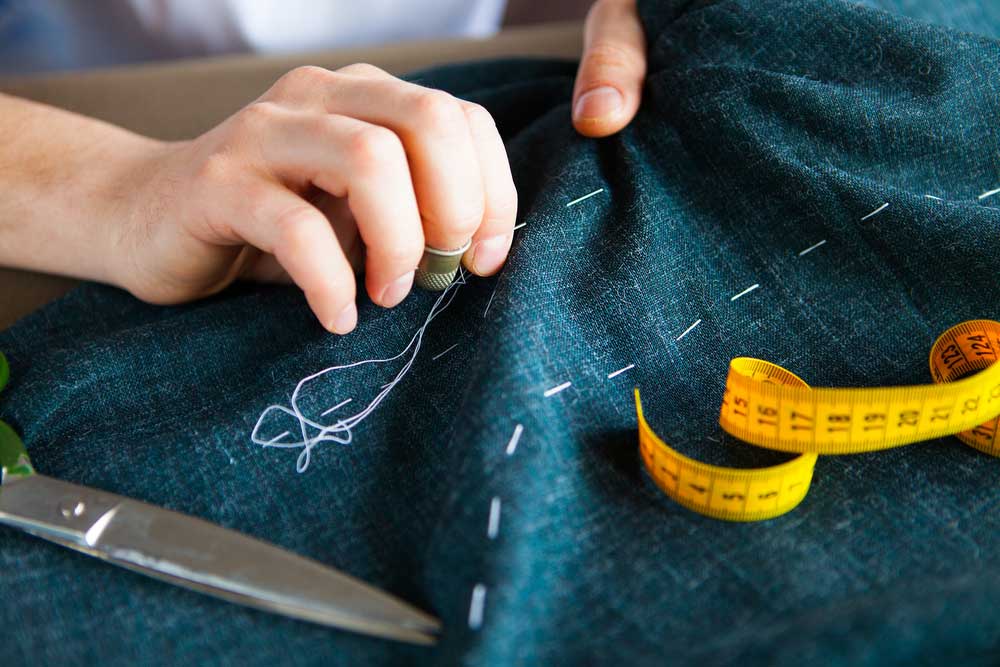
In most cases, a coat is an investment piece. Once you’ve found the perfect material, you’re set for several seasons ahead. Consider the properties of various fabrics and make a wise pick: something lighter for spring and early autumn, something more substantial and probably waterproof for winter. Avoid synthetic fibers, unless you’re creating some skiing apparel or it’s a special high-tech material designed for waterproof garments. And remember, since you’ll be wearing your coat for more than one season, it should be not only warm, but also stylish and elegant.
Tissura Collection
At Tissura, you can always buy coating fabrics woven by the leading European manufacturers:
- Clarenson (France),
- Malhia Kent (France),
- Holland & Sherry (Great Britain),
- Lochcarron (Great Britain),
- Grosber (Italy),
- Binda (Italy),
- Loro Piana (Italy),
- Luigi Verga (Italy),
- Carnet (Italy),
- Ruffo Coli (Italy),
- Jakob Schlaepfer (Switzerland),
- Frontline (Switzerland).
Finest worsted wool, timeless tweed boucle, marvelously patterned jacquard, exclusive combinations of wool with cashmere and silk — whatever luxury coat you desire, you will find the proper fabric here. Some of them are represented below — to get to the product page of each one, just click on the photo. See the whole collection by clicking on the button under the pictures:
Double stretch wool fabric, 160 € (192 US$) per one running metre;
Camel wool coating fabric, 149 € (179 US$) per one running metre;
Wool & alpaca coating, 110 € (132 US$) per one running metre;
Cashmere fabric, 357 €(427 US$) per one running metre
How to stay cool on a hot summer day? Wear fabrics built for the heat. Cotton, linen, viscose, silk – there are dozens of summer-friendly materials you can choose for your wardrobe. The best fabric to opt for when the temperature rises should be breathable and comfortable.
The wedding dress is one of the most important clothing items a woman gets to choose in her lifetime. It can be made of silk or cotton, lace or tulle, be strewn with sequins or embroidered with beads.
.jpg)
.jpg)
.jpg)
.jpg)
